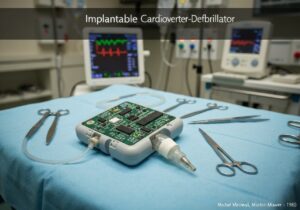To measure a user’s physiological response to a product or experience.
- Methodologies: Engineering, Quality
Heart Rate Monitoring

Heart Rate Monitoring
- Customer Experience, Human-Centered Design, Human-Computer Interaction, Usability Testing, User experience (UX), User Interface (UI), User Testing
Objective:
How it’s used:
- In the context of usability testing, heart rate monitoring is used to measure a user's stress and excitement levels while interacting with a product. This can provide insights into their emotional response and help to identify areas of frustration or delight.
Pros
- Provides objective data on a user's emotional response; Can identify issues that users may not articulate.
Cons
- Can be intrusive and may affect the user's behavior; The data can be difficult to interpret.
Categories:
- Ergonomics, Product Design
Best for:
- Evaluating the emotional impact of a new video game or a stressful checkout process.
Heart rate monitoring in usability testing finds its applications across a range of industries, including gaming, e-commerce, and healthcare, where emotional reactions can significantly influence user experience. In the gaming industry, developers utilize this methodology during beta testing by analyzing players’ heart rate fluctuations to understand moments of peak engagement and potential frustration during gameplay, enabling them to adjust difficulty levels or narrative pacing accordingly. Similarly, in e-commerce platforms, monitoring heart rates during checkout processes allows designers to pinpoint points of anxiety that may lead to cart abandonment, thus maximizing conversion rates. In the healthcare context, heart rate monitoring can be applied when testing patient management systems, where the emotional stress experienced by users (medical staff or patients) can directly impact their satisfaction and compliance. This method can be initiated by user experience researchers, product managers, or designers who seek to obtain objective data to complement qualitative feedback gathered during traditional usability testing. Participants can include target users from varying demographics to capture a comprehensive emotional response across different segments, which can provide a well-rounded understanding of user interaction and satisfaction. The collected data can be paired with follow-up interviews or surveys, creating a robust evaluative process that transcends subjective feedback alone and leads to more user-centered design refinements.
Key steps of this methodology
- Identify the task or interaction the user will perform.
- Measure baseline heart rate prior to the task to establish a control.
- Monitor heart rate continuously during the user interaction.
- Identify peaks and troughs in heart rate data to correlate with user actions.
- Analyze heart rate data alongside qualitative feedback from participants.
- Compare emotional responses across different user interactions or test conditions.
Pro Tips
- Integrate heart rate data with qualitative feedback to uncover discrepancies between physical responses and user perceptions.
- Utilize time-segmented analysis of heart rate spikes to correlate specific design elements or interactions with emotional responses.
- Combine heart rate variability measurements with other biometric signals (e.g., skin conductance) for a holistic view of user emotion during interactions.
To read and compare several methodologies, we recommend the
> Extensive Methodologies Repository <
together with the 400+ other methodologies.
Your comments on this methodology or additional info are welcome on the comment section below ↓ , so as any engineering-related ideas or links.
Historical Context
1965
1970
1980
1980
1960
1969
1976-05-28
1980
1990
(if date is unknown or not relevant, e.g. "fluid mechanics", a rounded estimation of its notable emergence is provided)









Related Posts
Master Production Schedule (MPS)
Mass Customization
Marketing Funnel
Marketing Audit
MAPO Index (Movement and Assistance of Hospital Patients)
Manufacturing Resource Planning (MRP II)